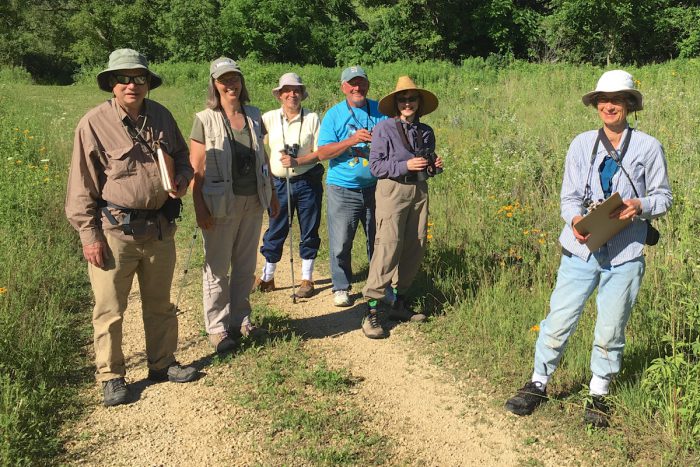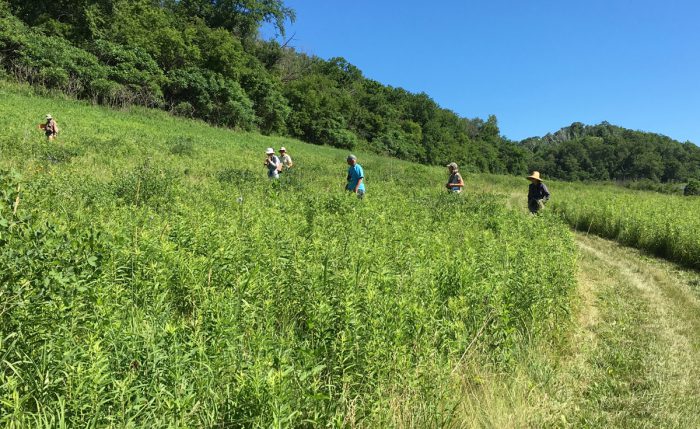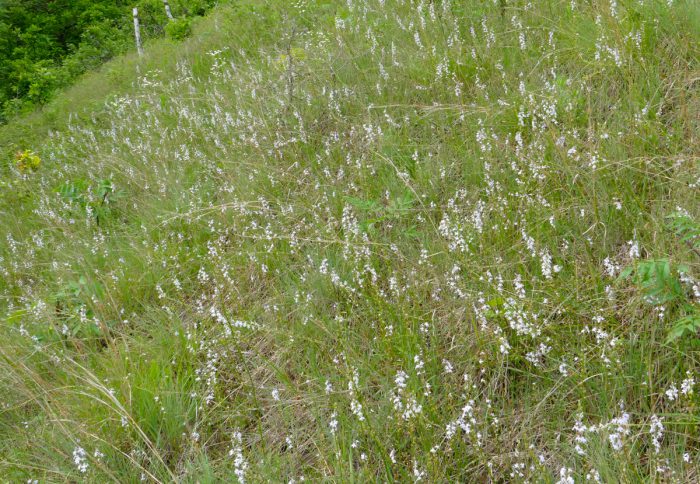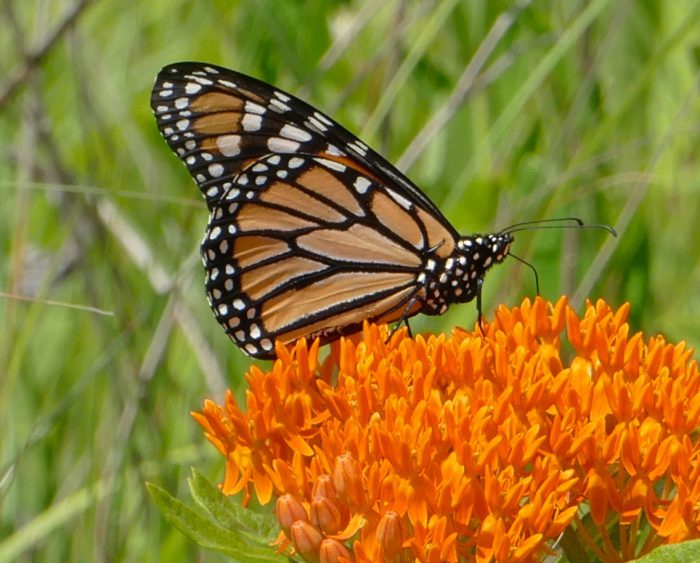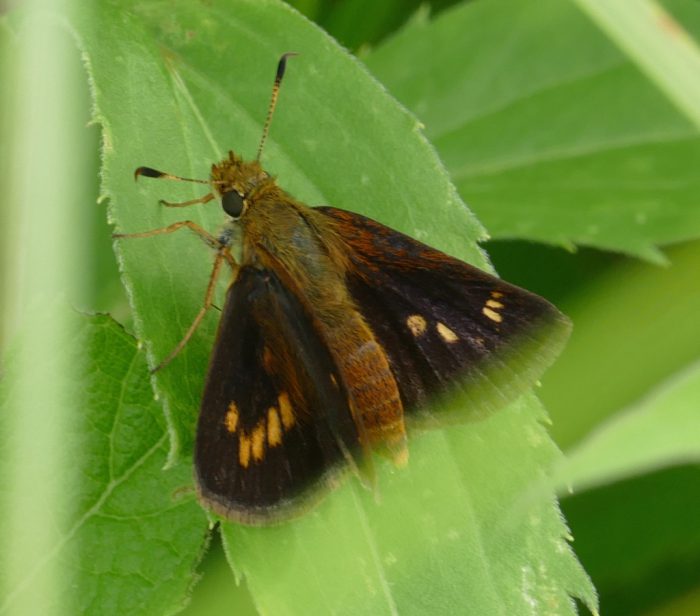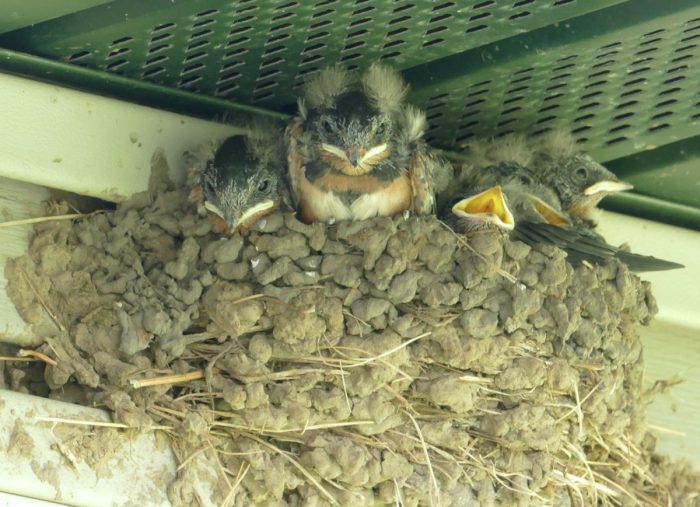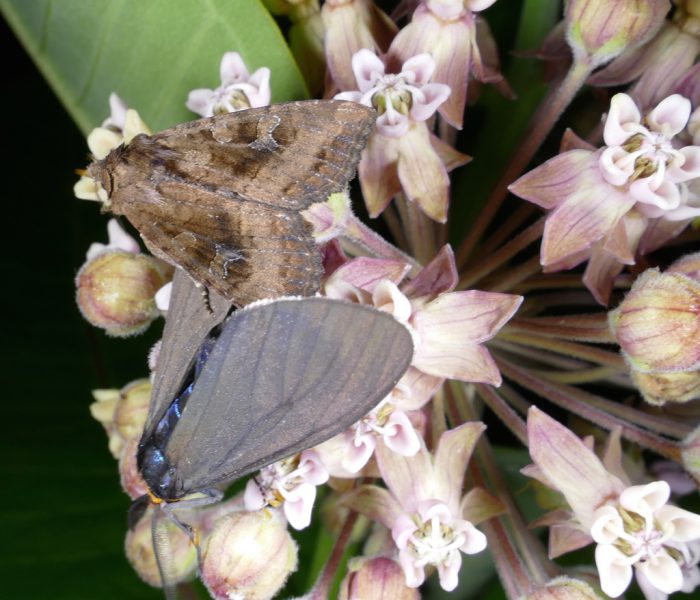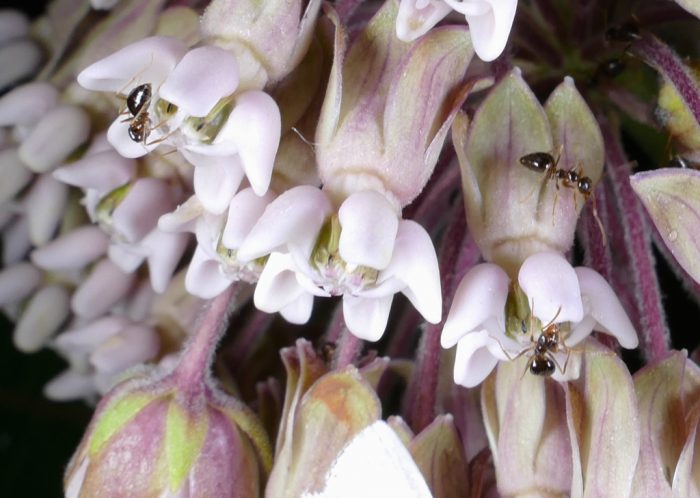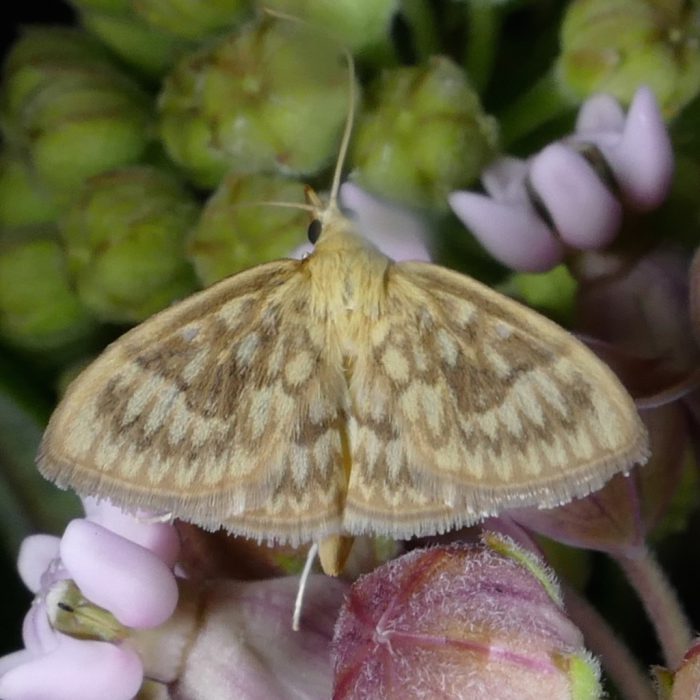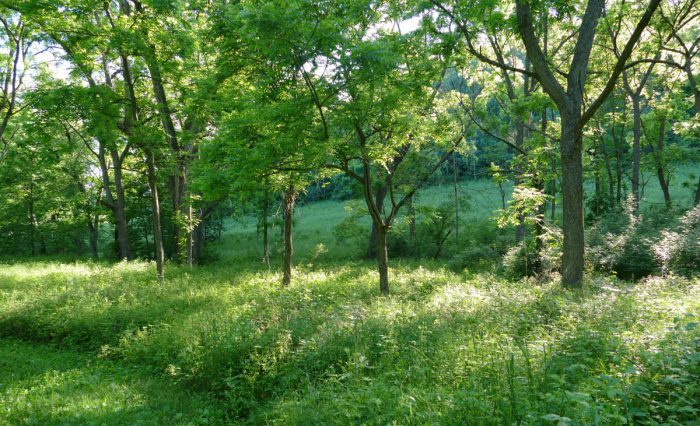On Saturday we did our annual butterfly count. We had a great group of folks helping, and perfect weather. We saw 36 species – not as many as in other years. Here’s the link to our final count.
Here we are – just setting out: Paul, Karen, Stan, Mike, Susan and me.
Scanning Pat’s Prairie for butterflies
The afternoon butterfliers at the Indian Grass Point bench: Stan, Mike, Karen, Susan
The biggest project at the farm right now is Wild Parsnip. This is in a wetland field that we call Parsnip Meadow. It used to be completely filled with Parsnip, but we’ve been mowing and pulling and cutting, and now there are only a few bad patches. This is one of them.
Now most of the meadow looks like this – after I pulled the stragglers.
The new EV is completely broken in now – I’ve been using it to haul the pulled parsnip to the compost pile.
This year we’re starting to work on some new parsnip areas, farther east in the wetland. The first step is for Mike to mow before the plants can go to seed. This is about half of this year’s mowing. We’ll mow for a few years until we reduce the number of plants enough that I can pull the rest.
I discovered a big patch of Spiked Lobelia on one of the slopes of the Knife Edge Point that I cleared a few years ago. It’s fun to see prairie plants coming back – a great reward for all the clearing work we do.
Close-up of Spiked Lobelia
More prairie flowers – Prairie Coreopsis, Harebell and Common Milkweed – on a cleared area of Indian Grass Point
We have Henslow’s Sparrows nesting in several of our planted prairies. They sit on the tops of plants or small shrubs and sing their little songs.
We haven’t been seeing a lot of Monarchs – this is the first photo I’ve gotten this year.
Mid to late June is the best butterfly time here. When the Butterfly Milkweed starts to bloom, it’s covered with nectaring butterflies. These are all Silvery Checkerspots.
Butterflies on scat in the driveway. This one scat deposit had 2 Red-spotted Purples, 1 Hackberry Emperor, 1 Northern Pearly-eye, 2 Red Admirals, and 10 Eastern Commas.
Mulberry Wing – Mike Reese has found this butterfly at the farm before, but I never have. This female was flying in the sedge meadow.
The first batch of Barn Swallows in the nest outside our porch windows. These fledged about a week ago, and now the parents are building a new nest.
Common Milkweed sends out its strong scent at night, and attracts lots of insects – ants, spiders, bugs and moths.
Ctenucha Moth and Veiled Ear Moth
Ants (Prenolepis imparis – thanks to James Trager for the ID)
Common Milkweed flower – they’re even more beautiful at night than in the daytime
Mike figured out a new scheme to project my moth photos as I take them. It’s sometimes difficult for people to appreciate the colors and designs on tiny moth wings. Now, as I take the photos, they’re sent to a computer, and Mike can project them onto a screen. The screen images are much bigger and easier to see. We’re excited to try it at our moth party. Here’s Mike with his new set-up.
And a few cool moths from the last few weeks.
Sawtoothed Crocidophora – a new species for the farm. I’ve never seen this one at my lights – only on Common Milkweed at night.
Another new one – Eyed Dysodia
Basswood Leafroller – one of my favorites
Yesterday, as I drove the EV out to the wetland to work on Parsnip, I met a fawn. It raced out in front of me, then stopped and looked – danced around a bit and stopped again – clearly asking if I wanted to play. A moment later another fawn arrived, and they both capered around in front of me. Finally Mom arrived – looking very suspicious. After 5 minutes or so of the kids playing, and Mom looking on, she gave a loud snort and they all ran off.
A few mid-summer scenes….
A storm passing by to the south
Michigan Lily in the wetland
Prairie Coreopsis on Indian Grass Point
Afternoon sun in Walnut Woods

